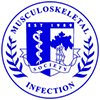Authors: M.E. Olson1, K.L. Garvin2, P.D. Fey1, and M.E. Rupp3.
Title: Initial Adherence of Staphylococcus epidermidis to Orthopedic Biomaterials is Polysaccharide Intercellular Adhesin (PIA) Dependent.
Addresses: Departments of Pathology and Microbiology1, Orthopedic Surgery2, and Internal Medicine3, University of Nebraska Medical Center, Omaha, NE. 68198
Purpose: Staphylococcus epidermidis is the most common cause of orthopedic prosthetic device infections. Polysaccharide intracellular adhesion (PIA), produced by enzymes encoded by the icaADBC operon, is a defined virulence factor of S. epidermidis and is important in the pathogenesis of intravascular catheter-associated infection. PIA has an essential role in post-adherence multi-cellular aggregation and biofilm formation; however its role in initial adherence and adherence to orthopedic biomaterials is less well understood. This study was performed to ascertain whether PIA plays a significant role in the initial adherence of S. epidermidis to orthopedic biomaterials.
Methods: The following S. epidermidis strains were used in this study: 1457, 1457 M10 and TM300. 1457 is a clinically-relevant, wild type S. epidermidis strain that makes a PIA-dependant biofilm and has been shown to be virulent in animal modals. 1457 M10 is an isogenic icaA Tn917 mutant, shown previously to lack PIA production and to be significantly less virulent than wild type in in-vivo models of intravascular catheter infection. TM300, a PIA and biofilm negative strain of Staphylococcus carnosus was used as a negative control. Seven different orthopedic biomaterials were used in this study: zirconia, ultra-high molecular weight polyethylene (UHMWPE), polymethyl methacrylate (PMMA), cobalt chromium, titanium, silastic catheters and stainless steel. Biomaterials were incubated in an overnight stationary phase culture for one hour, removed from solution, placed into sterile phosphate buffered saline (PBS), and vortexed for one minute. The PBS was then serially diluted and plated in order to obtain the colony forming units (CFU) that adhered to each respective compound. All tests were performed in triplicate and repeated at least 3 times.
Results: On all biomaterials, 1457 had significantly greater adherence than either 1457 M10 or TM300. Bacterial adherence by 1457 was greater on stainless steel and cobalt than titanium. Differences in available surface area made other material-to-material comparisons difficult.
Discussion: These data suggest PIA plays a critical role in initial adherence of S. epidermidis to orthopedic biomaterials and may serve as an important virulence factor in orthopedic prosthetic device infections. Additionally, differences in the ability of 1457 to adhere to various orthopedic biomaterials suggest that certain compounds may be more prone to S. epidermidis colonization and may be more likely to be associated with orthopedic prosthetic device infections.
Significance:

